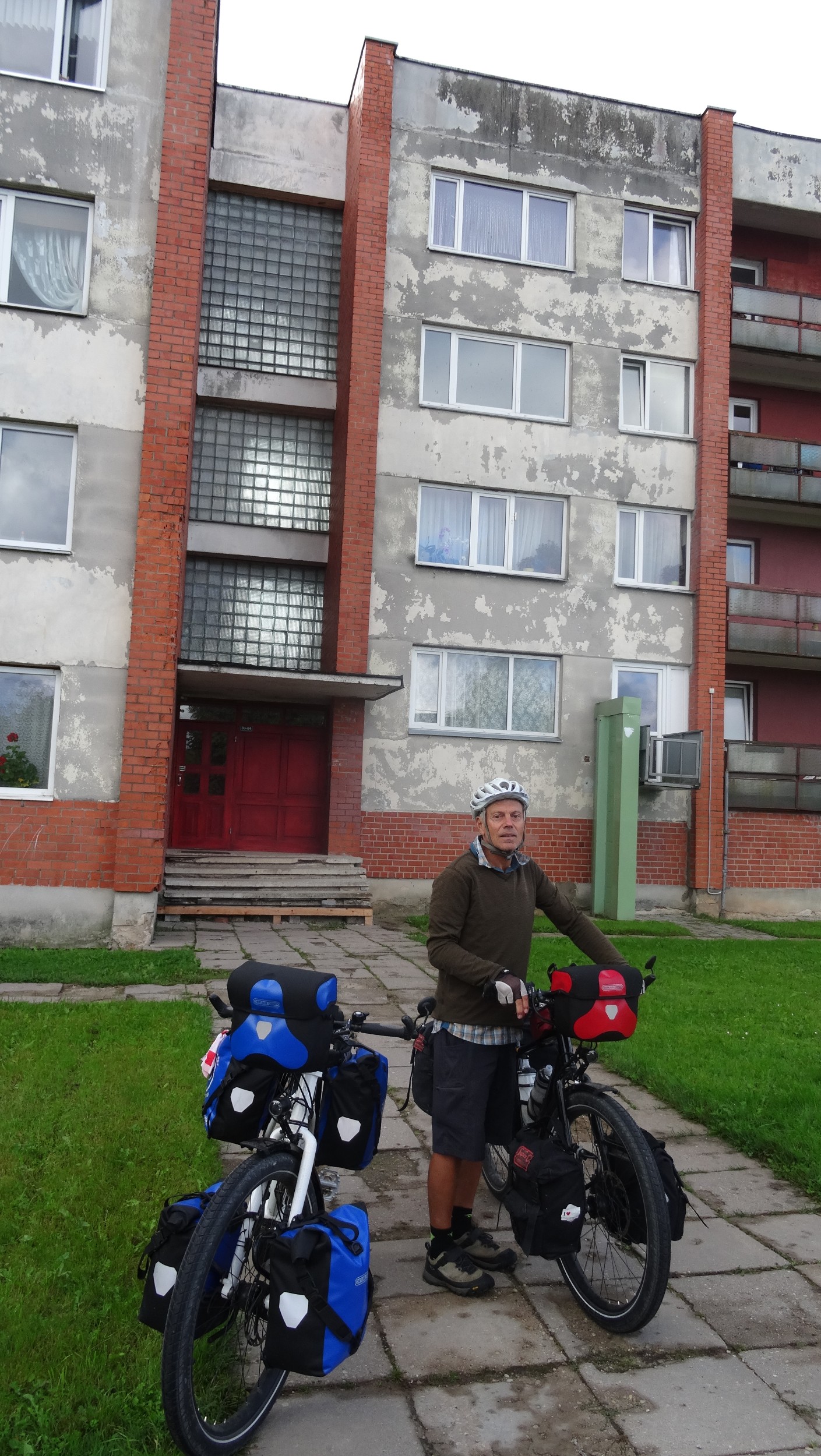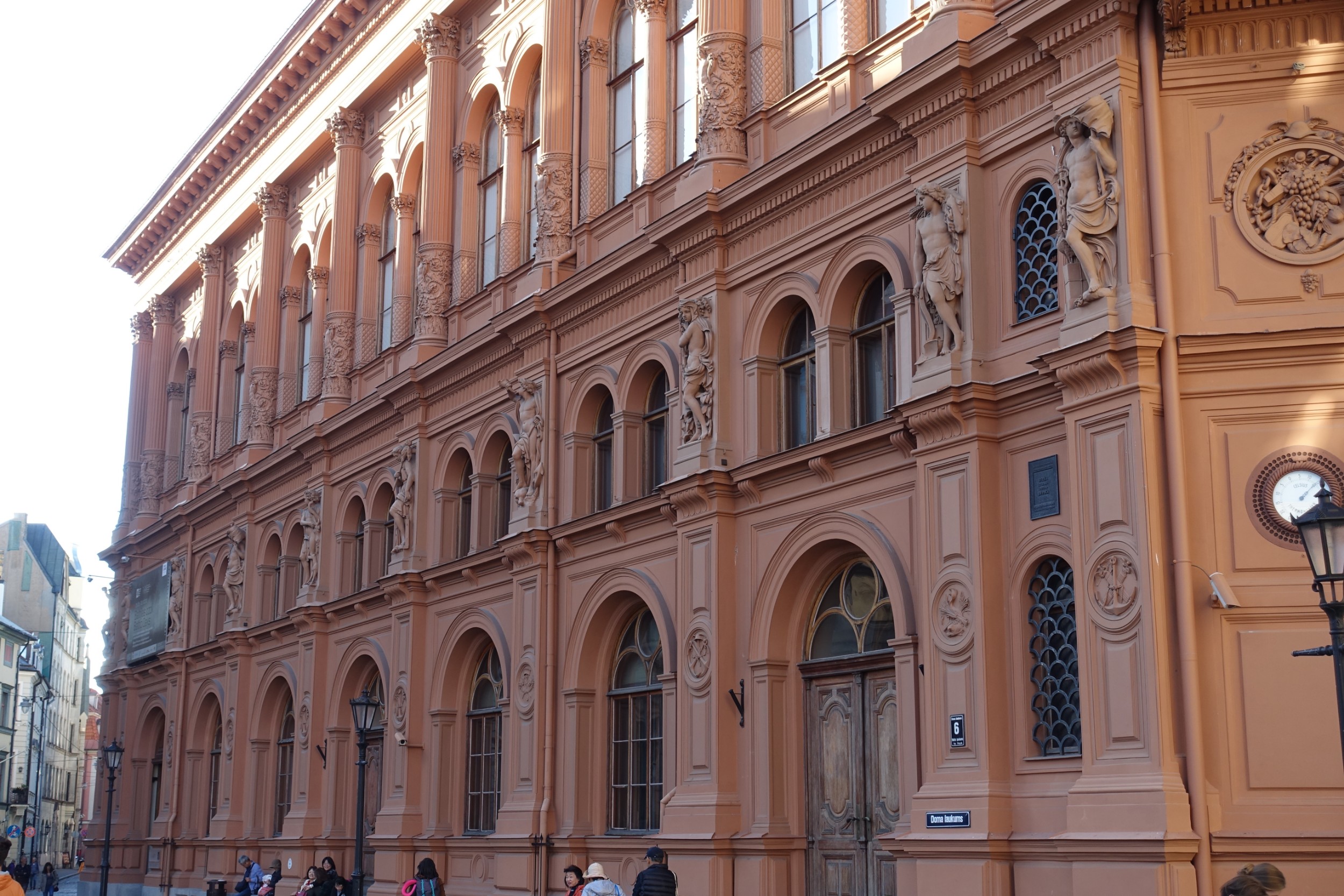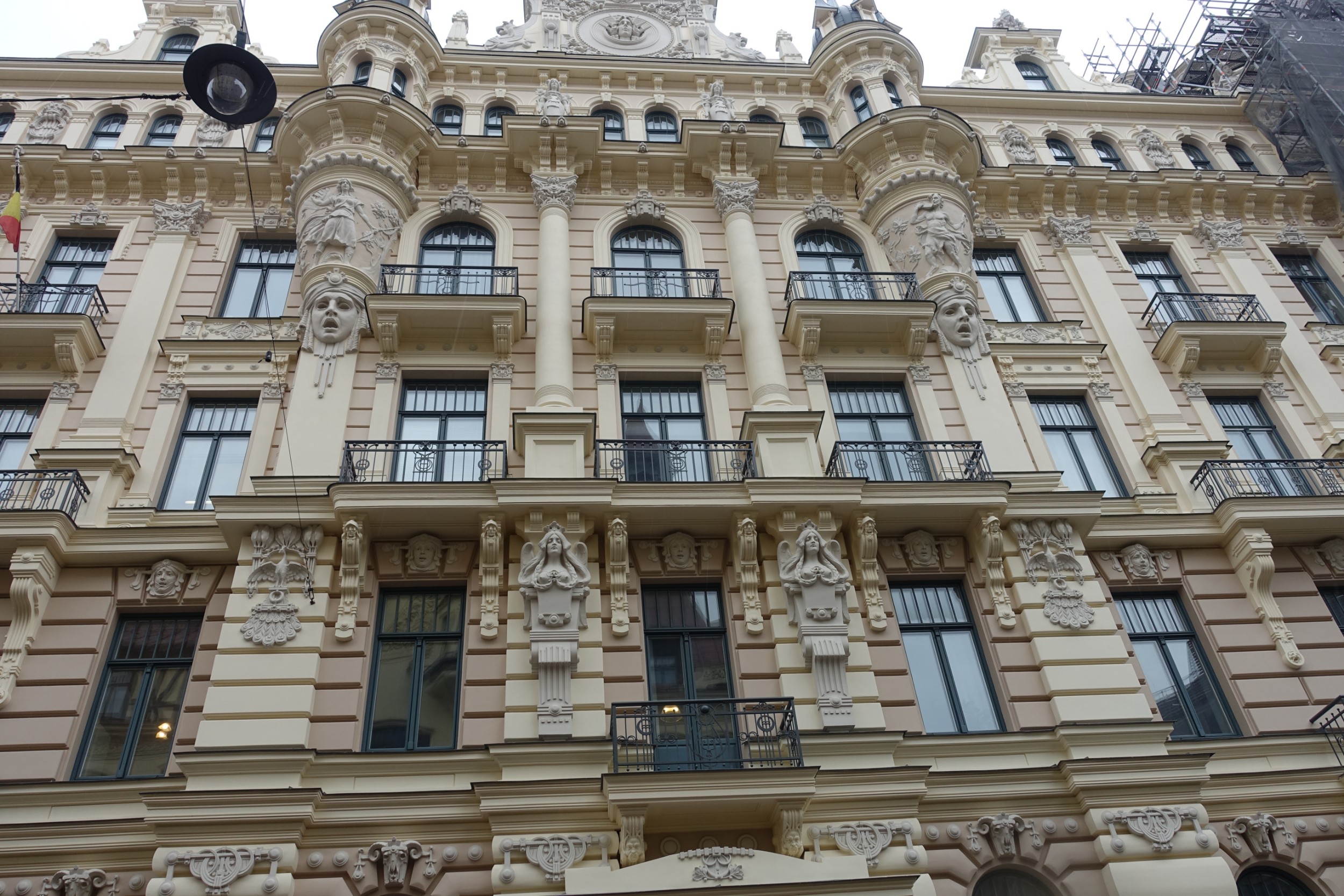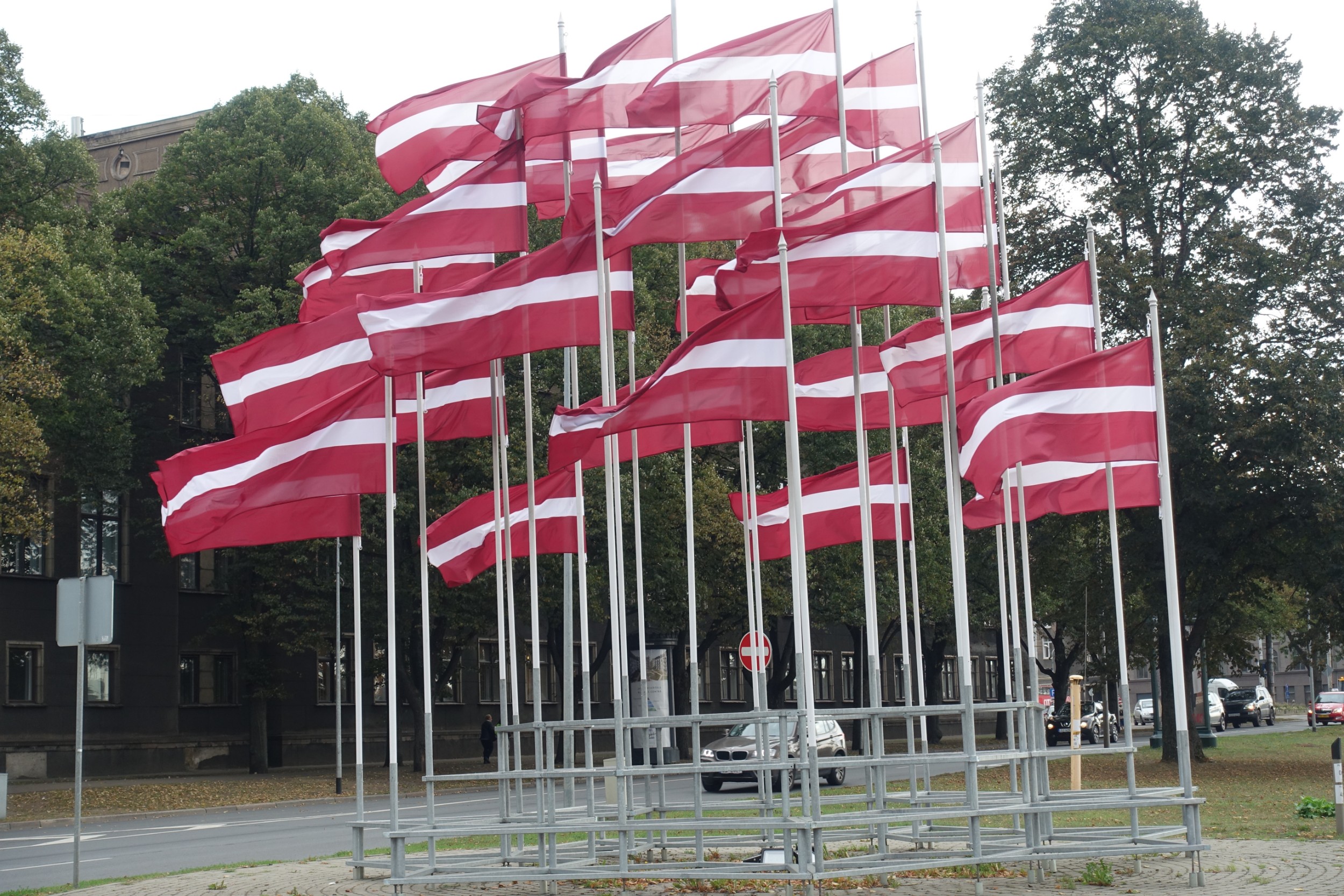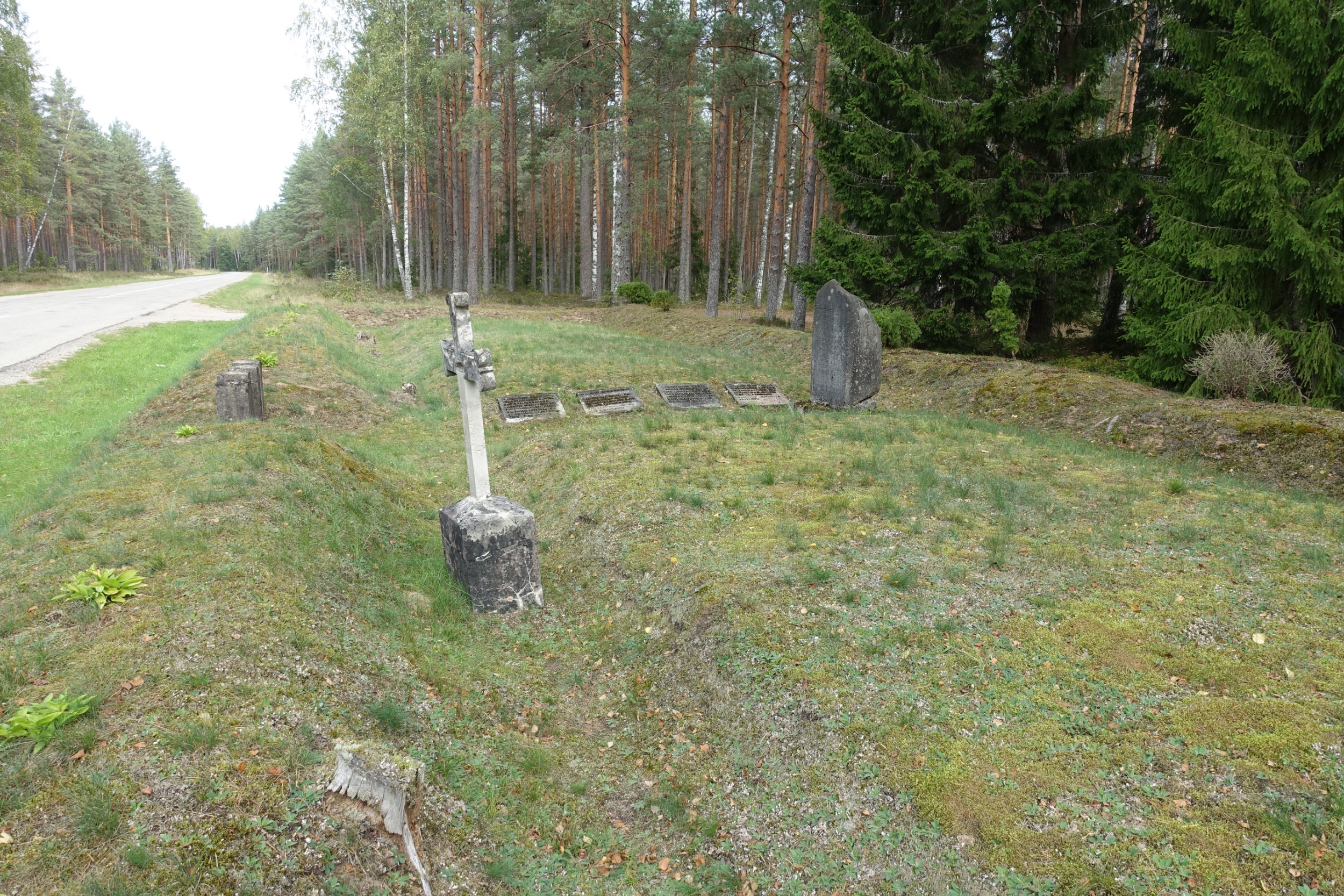Eastern Europe: Latvia
Louise George
We crossed from Estonia (you can read our Estonia blog here) into Latvia. Of course, the road and scenery hadn’t changed; flat, forest, occasionally farmland, with no view of the ocean, and I was beginning to think that our ride in Latvia was going to be uneventful. I started to question why we were here. We wanted to experience the Baltic States, as these countries were closed to travellers in the mid 70’s when we travelled extensively in Europe, by VW Combi van. We hadn’t found much information about riding here, and the relative unknown had an appeal, but the ride was starting to feel monotonous, and unspectacular. There were two points of interest, published in tourist brochures so we headed inland to see Cesis and Sigula.
At Salacgriva, a bill-board map showed we could follow cycle route 7, then later switch to 111, to get to Cesis. The route went through Limbazi and there was a lake that had a trail along the shoreline. We felt certain we’d find a suitable camp spot there, but scrubby bush grew almost to the spongy lake edge so we continued into the countryside. Near the start of the minor road we would take the next day, we found a secluded area beside a small lake near an abandoned cottage.
The night was our coldest yet, it was only 6 degrees when we broke camp. On the minor road the surface was sandy-gravel and it sucked our energy but warmed us up quickly. We rode about twenty kilometres on forest roads, although still gravel, fortunately the surface firmed up. It was good to get back onto tarmac near Stalbes and buy some more water that was ‘normal’. Last night’s supply, purchased as a back up, had been mineral water. Not so good for making coffee. We rode through Gaujas National Park, a heavily wooded area, popular for hiking, and with small lakes for boating.
Cesis, a small town of cobbled streets and wooden houses that seemed to have mostly been converted to coffee shops, is known for its medieval castle built in the 13th Century, and rebuilt many times since. There is also a ‘new castle’ that was a palace. We visited both, walked all of the streets and around the castle lake and had an early dinner at a restaurant serving Latvian traditional food, before making our way to the station and catching a train to Sigulda, saving ourselves a 40km cold, wet, ride. We had read that Latvian trains are awkward to get bikes onto and that was certainly the case. We had unloaded the bags but had to hoist them up a number of steep steps to get them onto the carriage. Fortunately we got offers of help to get them onto, and later off, the train. We had trouble finding our accommodation. It was near town and the location easy enough to find, but we’d booked an apartment and found ourselves standing outside a concrete apartment block, that with an exterior of peeling paint, looked rather dismal. Eventually a young man stopped and asked if he could help. He rang the phone number on the booking. We were at the right place. A man came to let us in to a very nice apartment on the third floor. I guess here people who rent apartments in huge blocks have no control over the condition of the exterior. With no secure parking, Nev, as usual, had to lug each bike up the stairs.
A tourist brochure had a couple of cycle routes to explore. “Sigulda ‘Thrills’ Bike Ride” guided us to Walking Stick Park, that acknowledges the 200 year old history of walking stick making, that began to assist people walking in the woods. On the outskirts of town we had extensive views of forest of the National Park that surrounds the town. Sigulda is proud of the two adventure parks and a Bobsled and Luge track, used for training by locals who have won medals at Olympics. There is also a Serpentine Road, the only one in the Baltics, and a castle, but our hearts were no longer in sightseeing mode, so we headed back to the station and caught a midday train to Riga.
Riga is the capital of Latvia, and we enjoyed one and a half days exploring, on foot and by bike. Riga is a pretty city with a canal and parklands running through the centre. There is also the very wide Daugava River that has a port. The Old town, had many interesting buildings and many streets on the more modern area of the city had buildings of ‘art nouveau’ style; painted in pretty pastels with white decorations as elaborate as wedding cakes.
To depart from Riga, we took a train to Slokas Station, Jurmala, 24 kilometres away. This gave us an easy exit from the city and allowed us to start our ride from the coast. We had deliberately chosen a, not so direct, route to Liepaja, because there were a couple of attractions on the way. While our ride began by following the Riga Gulf coast, we couldn’t actually see it. Later, at the place where we detoured to go to look at the ocean, it happened to be a war memorial, remembrance to the Finnish Jaegers who fought along this coast in World War 1. Indentations of the trenches were still visible. We continued our ride rather sombrely as we passed a number of cemeteries in the area, and reflected again on our good fortune to be born in a ‘lucky” country. Even though we’d started our day by train, and the ride had been only 60 kilometres, with only occasional waves of hills that added interest to the landscape, it had seemed like a long day. We pitched our tent amongst some trees and settled for the night.
The following days became a blur of a view that hardly ever changed. A long stretch of road, that eventually led into a corner, farmland either side and in the distance some forest. Apart from breaks at a couple of towns, this view continued for 300km, getting ever more drawn out as we battled into headwinds, all the way to Klaipeda in Lithuania. Over the next few days we covered around 80km each day, taking turns in the lead for 2 km at a time. We were mostly riding main roads, watching the white line, pulling into the lay-by every second bus stop, and changing lead position. At least traffic was light, and continued to overtake us courteously.
We’ve come this way to see Latvia’s highest waterfall, Ventas Rumba but we won’t get there until later in the day. We’re attracted by a bill-board that boasts to be Latvia’s second highest waterfall so pay the €1.50 each to take a look. We ride to a pretty river that has not much more than a small rapid on a bend. It’s a tranquil spot with a camping or picnic area beside it. I note the sentence on the bill-board as we leave to the effect that; ¨people from overseas may not be impressed by the size of the waterfall, but people form opinions based on their world view and other experiences¨. I am reminded again of my privileged lifestyle. We’ve been given opportunities and made some good choices in life that have lead to our current retirement travel by bicycle. People here have only had 30 years of freedom, and still many would not have the opportunity to travel beyond their own country.
Ventas Rumba
Our next stop was at Ventas Rumba, the widest waterfall in Europe – 249 metres (817 ft) and up to 270 metres (886 ft) during spring floods. At certain times of the year, fish jump it to go to their spawning grounds. The waterfall was a solid obstruction on the Venta River, and at times between the 17th and 19th centuries, efforts were made to dig a channel around the falls to achieve a waterway between the Baltic and the Black Sea. These efforts were later abandoned. We crossed the brick bridge built in 1874 into the ancient town of Kuldiga, first mentioned in 1242, and wandered around the cobbled streets, admiring the wooden buildings.
Riding into Kuldiga
From Kuldiga we ride another 10 kilometres, as we’d noticed a small lake on the map just off our route, and decided to head there to camp. We passed open pasture, and some farm houses to get to the lake but after some exploring, found the lake to be surrounded by reeds and bog with many mosquitoes. By the time we got back to the main road it was almost dark. Fortunately we found a good place to pitch the tent on a grassy unused track, just to the left of, and on a rise, higher than the road.
Another long day of riding into headwinds delivers us to a nice ‘granny flat’ in Leipaja that is situated in the backyard of the owner. Having had 2 nights of free-camping we are ready for a shower and catching up on laundry. We walk into the town centre for dinner and the next morning ride around the key points of interest in the town, along the river promenade and through a park that borders the beach, before battling another long day of 80km into headwinds. We stop for lunch at Nica, and are each served an enormous meal. Potato fritters and salad for me, and for Nev, pork and mash. From here it’s a long ride to Palanga, but we cross the border into Lithuania before we get there. You can read our Lithuania blog here






